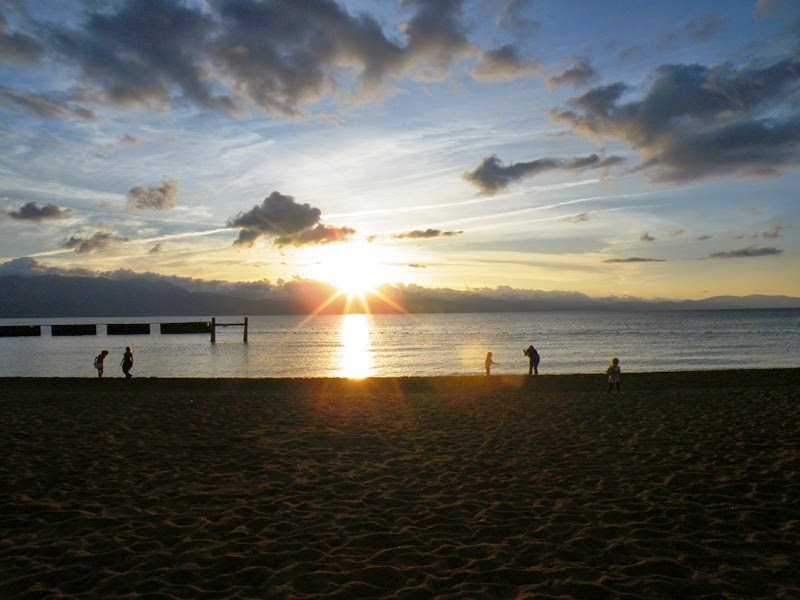We continue our exploration of the California drought for Earth Week. See our first post here.
Just about a mile from the casinos of South Lake Tahoe, there's a Forest Service park where you can hike and get wonderous views of the lake, the forest, and Taylor Creek. It's a wonderful trail, beautiful really, where you can get lost from the nearby city. Along the trail is a short detour. Follow it, and you'll end up in an underground chamber.
This is the Stream Profile Chamber, a pool where a portion of Taylor Creek has been diverted and a large, glass window allows visitors to watch the life underwater here. Trout, crawfish, perch, and more illustrate the absolute need for fresh water to flow in an ecosystem.
It also shows how much a change in water can alter this. Dam up a creek or river and what happens to all that life underwater? What about the animals that feed on these creatures? What does it take to replace it?
Hence the dilemma facing our state. Cut back on agricultural water and what happens to the crops that depend on it? How do you replace that food source? What happens to the oxygen producing, waste water filtering abilities of our lawns if we let them fallow? What about the employees of businesses that rely on a source of water?
More than half of the nation's fruits, vegetables, and nuts come from California. The top three crops are almonds, dairy, and dairy products. Grapes are also huge here. The state exports over $20 billion dollars worth of agricultural products and the total production approaches $50 billion per year.
Since 1980, California agriculture has lessened its water use by about 5% while increasing crop yields at the same time. Farmers have utilize methods such as drip irrigation, tailwater return systems, irrigation scheduling, canal lining, water banking, and remote monitoring to increase water efficiencly.
Still, there are calls for agriculture to share in the current pain of the state's new 25% mandatory reduction. Of course, that means less and more expensive food for the entire country not to mention killing jobs in an already high-unemployment area of the state.
Some restaurants in particularly hard-hit areas say they have to switch to disposable plates and utensils because they don't have enough water to wash dishes. Of course, that impacts landfills.
Hydroelectric dams need water to generate electricity, when they go offline, fossil fueled generators have to take their place. River guides join the unemployment lines, as do car wash employees, gardeners, and more.
This is to show that knee-jerk reactions to just cut everybody's water have real-world consequences. It's all part of a big ecological puzzle and has to be carefully considered and implemented.
All that being said, the state does not have enough water to satisfy the long term demand if rain relief does not come soon. Now the question is how to cut and who do we cut from.
It's hard to say which industries are water hogs. We have pretty good agriculture data and the recent fracking controversy shows that industry using 0.00062% of the state's water each year. Car washes mostly use recycled water. Other than that, it's hard to pinpoint various industries use of water (which is included in the residential alotment).
The other very large alotment of California water is for environmental uses. These are determined by court orders, legislation, and other factors and are generally non-negotiable without much litigation and legislation. Water savings here are generally considered 'off the table' and leaves us with the residential customer taking the hit.
We'll look at ways to whittle that 12% down to 9%, which is what the state is telling us we must do, on the next post.
Darryl
Copyright 2015 - Darryl Musick
All Rights Reserved
Sources: Bay Area Science Forum
California Department of Water Resources
Metropolitan Water District
Bakersfield Californian
Los Angeles Times
Washington Post




No comments:
Post a Comment